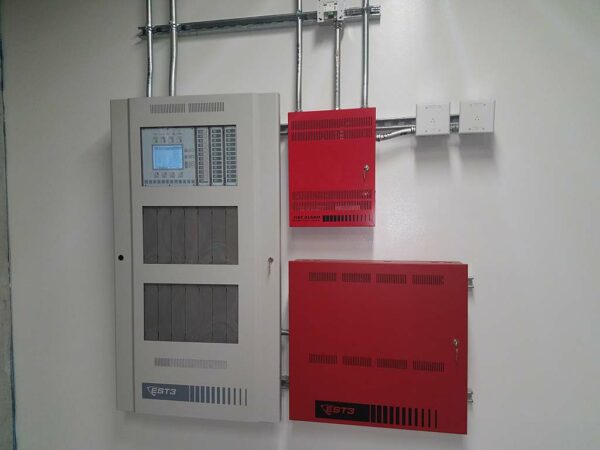Fire Alarm Systems and Fire Detection
As a leader in the fire system industry, WFE employs experts chosen for their ability to help you protect your facility from fires. One of the tools they utilize are fire safety systems, systems that are essential for almost every type and size of commercial and industrial building.
There are two broad categories of fire safety systems: Fire Alarm and Fire Suppression.
Fire alarm systems perform 2 basic functions. In the event of a fire incident, it is their designed function to detect a fire, and will do so in a variety of ways, dependent on design criteria. Immediately upon detecting a fire, the system then notifies the occupants of the facility through both visual and audio means.
Fire suppression systems are often more specialized than fire alarm systems, as not only does the system detect the event and notify the facility, but it is responsible for extinguishing it, as well. These systems utilize various media to extinguish fires, beginning with standard water and progressing chemically-engineered gases, depending on the need and application.
A well-designed fire safety system will include both fire detection systems and fire suppression systems to help your facility in the event of a fire. In addition, each system should be completely customized to your building for enhanced safety and property protection.
Some devices to consider for your system include:

- Multi-Channel Audio Alarm Systems
- Heat Detection Systems
- Gas Detection devices
- Pull Stations
- Audio-Visual Devices
- Network Fire Panels
- Local & Remote Annunciators
- Intelligent Smoke Detectors
- Integrated Graphic Controls
- Fire Extinguishers
- Thermal Video Detection
- Clean Agent Suppression Systems
- Water Mist Fire suppression systems
- Emergency Lighting
- UL-Certified Monitoring
WFE’s fire protection design team offer turnkey and fully-customizable solutions for your fire detection and fire suppression needs. This is done through the coordination and conversation between WFE and your facility to determine your specific goals and needs. Our consultants will discuss site-specific challenges and areas of risk, as well as discussing budgetary constraints and strategies for efficiency in design and installation.
Network Based Platforms for Fire Alarm Systems
The first automatic fire alarm was invented in 1890, and with the passage and improvements of more than a century, modern systems are far more advanced. Systems of today are network-based and can be completely integrated with your other life-safety and security systems. We regularly design integrated network-based systems for improved safety, and hassle-free central monitoring.
What is a network-based fire safety system? Essentially, it is a system that communicates. Each control panel not only monitors its own sensors and devices, it also “talks” to other fire safety control panels. This allows your whole system to operate seamlessly.
There are many benefits of having network-based fire alarm systems. First, they offer a more resilient system, as a malfunction in one control panel doesn’t take the entire system down. Also, they offer easier monitoring, which increases their ROI. You can check the status of any building or even individual components of the system from a centralized dashboard, even remotely! That means needing fewer resources for fire safety monitoring.
Also, network-based systems can be fully integrated with your other systems. For example, if you have access control systems in your building, these can slow personnel down when trying to escape a fire. Integrated fire alarm systems can turn off the access control measures when they detect a fire to allow for fast means of egress.
We offer advanced system design and installation to help you keep your facility safe. Contact us now to get started with your new fire safety systems!

